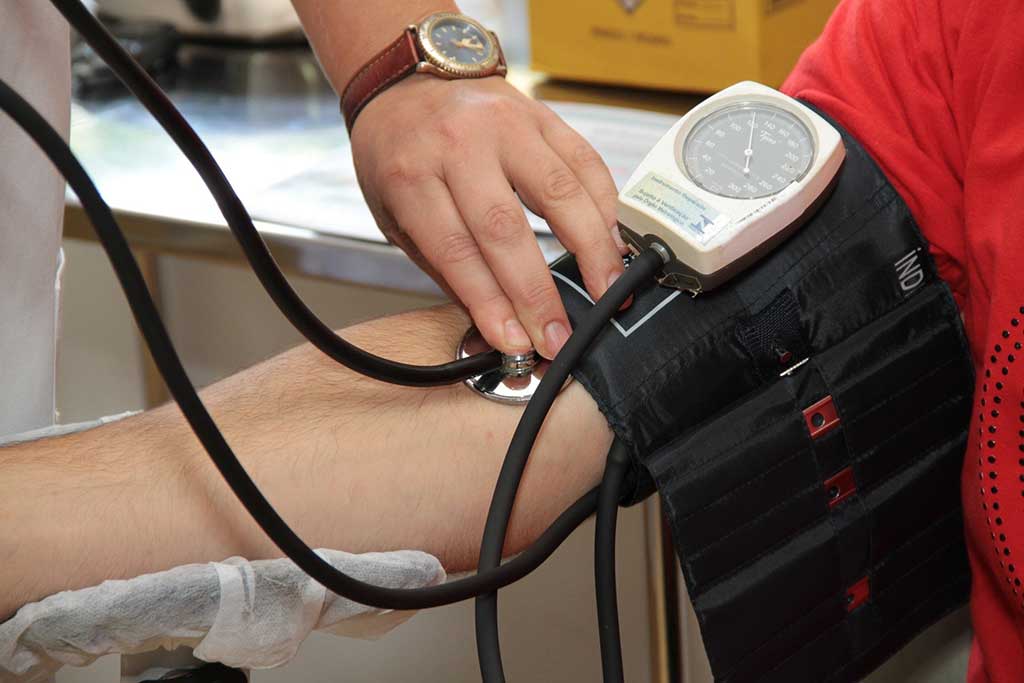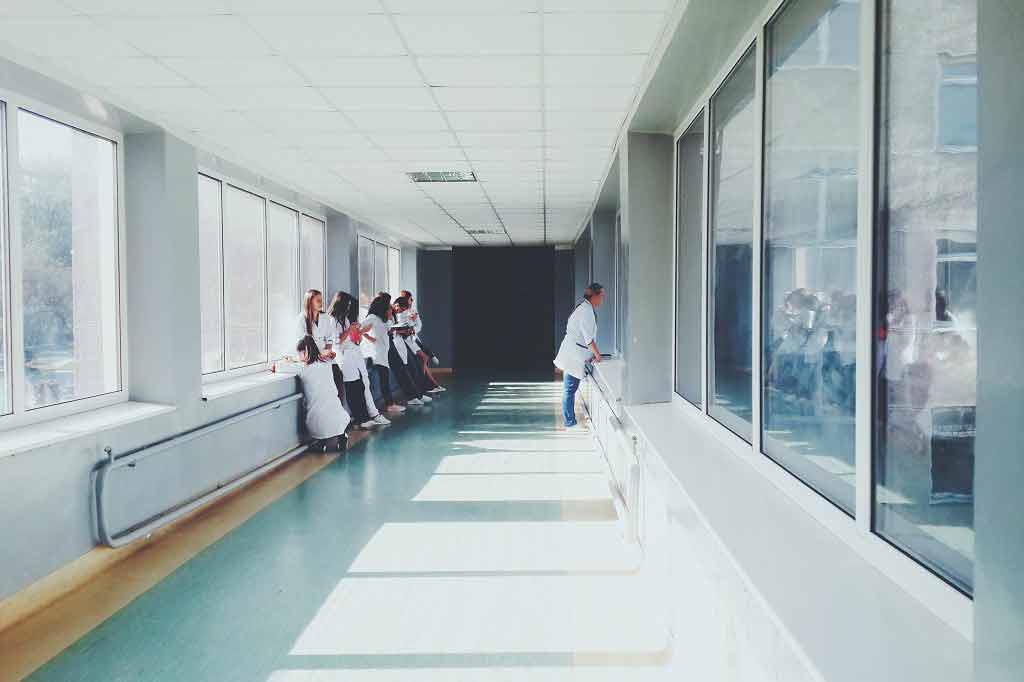24-hour blood pressure monitoring 'better than one-off clinic checks'
Medical practice

'Blood pressure readings at home 50 per cent more accurate' The Daily Telegraph reports
"'White coat syndrome' is real," reports The Daily Telegraph.
Researchers have long suspected that so-called "white coat" hypertension – when people get a spike in blood pressure when having it taken by a doctor, but they don't have high blood pressure most of the time – means that one-off testing produces less reliable results.
Twenty-four-hour monitoring is thought to be more useful, as it produces an average score of blood pressure throughout the day and night. But it's more expensive, so it's used less often.
Researchers studied nearly 64,000 Spanish adults who'd had their blood pressure taken both by a traditional one-off measurement device in the clinic, and at home using a 24-hour monitor.
They followed people up for an average 4.7 years. The aim was to see how well 24-hour monitoring and one-off clinic measurement predicted risk of death.
The researchers found that 24-hour monitoring was much better than one-off clinic readings for predicting risk of cardiovascular death.
They also found that people with high blood pressure on the 24-hour reading but not the clinic reading (masked, or "missed", hypertension) had the highest risk of death.
Most GP surgeries now offer a 24-hour blood pressure monitors you can borrow. They're normally limited to just a few for each surgery, so you may have to book in advance.
Where did the story come from?
The researchers who carried out the study came from universities and hospitals in Spain: the Universidad Autonomica de Madrid, Hospital Universitario 12 de Octubre and CIBER of Cardiovascular Disease, Universidad Europea de Madrid, Hospital Mutua Terrassa, University of Barcelona and Hospital Universitario Central de Asturias, as well as University College London in the UK.
The study was funded by the Spanish Society of Hypertension and Lacer Laboratories.
It was published in the peer-reviewed New England Journal of Medicine.
Several UK media outlets covered the story. The Times criticised the use of "outdated" technology to measure blood pressure, which the Mail Online said was "being measured all wrong".
But the study didn't say that clinic blood pressure measurements were of no use – rather, that they were more useful if backed up by 24-hour measurements.
What kind of research was this?
This large cohort study recruited patients over 10 years from 2004 to 2014, and followed them up until the end of 2014.
These types of studies are useful for spotting patterns among large groups of people.
What did the research involve?
Researchers asked physicians at 223 primary care centres across Spain to recruit patients into a blood pressure register if they were 18 or older and met the guideline recommendations for 24-hour blood pressure monitoring.
Patients who agreed had their blood pressure taken twice in the clinic, as well as a 24-hour blood pressure monitoring session. Researchers followed up how many of these people died, and of what cause.
They then looked at the blood pressure monitoring results to see which type of blood pressure records were best at predicting death and which groups of people were most at risk.
They adjusted 24-hour monitoring results to take account of clinic blood pressure results, and the other way around, to get a clear picture of which type of monitoring was most accurate.
They presented results both as the increased risk of death for every standard incremental increase in blood pressure, measured both ways, and as results for 3 types of patients:
- patients with white coat hypertension (high blood pressure in clinic readings but not 24-hour readings)
- patients with sustained hypertension (high blood pressure in both clinic and 24-hour readings)
- patients with masked hypertension (high blood pressure on 24-hour readings but not in clinic readings)
They adjusted their figures to take account of people's age, sex, body mass index, and whether they had diabetes, previous cardiovascular disease, or used blood pressure lowering medication.
They looked at both death from any cause and death from cardiovascular disease only, but the two sets of results were very similar.
This analysis focuses on deaths from any cause.
What were the basic results?
During the follow-up of 63,910 patients, 3,808 people died. Both types of blood pressure reading were linked to chances of death, but 24-hour monitoring had the greatest power to predict chances of death.
- Each incremental (standard deviation) increase in 24-hour measured average systolic blood pressure was linked to a 58% increase in risk of death (hazard ratio [HR] 1.58, 95% confidence interval [CI] 1.56 to 1.60).
- Each incremental (standard deviation) increase in clinic-measured systolic blood pressure was linked to a 2% increase in risk of death, though this result could have been due to chance (HR 1.02, 95% CI 1.00 to 1.04) as it wasn't statistically significant.
Looking at the different groups of patients, the researchers compared the risk of death in people who had different types of high blood pressure with the risk of death in people with normal blood pressure:
- people with white coat hypertension had a 79% increased risk of death (HR 1.79, 95% CI 1.38 to 2.32)
- people with sustained hypertension had an 80% increased risk of death (HR 1.80, 95% CI 1.41 to 2.31)
- people with masked hypertension had a 283% increased risk of death (HR 2.83, 95% CI 2.12 to 3.79)
How did the researchers interpret the results?
The researchers said their results showed that 24-hour blood pressure measurements "were a stronger predictor of all-cause and cardiovascular mortality [death] than clinic blood pressure measurements".
They stressed that white coat hypertension "was not benign" and was still linked to a higher risk of death, but masked hypertension had the highest risk of death.
They said perhaps this is because people with masked hypertension took longer to get diagnosed, so were more likely to have damaged organs by the time they were diagnosed.
Conclusion
It's no surprise that having high blood pressure increases the chances of dying sooner than people with normal blood pressure. High blood pressure can damage blood vessels and organs over time, raising the chances of a heart attack or stroke.
This study confirms that the most accurate way to measure blood pressure is using a 24-hour monitor. But that's not to say that the standard blood pressure test you have at the GP surgery isn't useful.
Most people would only be referred for 24-hour monitoring if they had discrepancies between different clinic readings or if clinic readings were high.
Guidelines for UK doctors recommend that people should have 24-hour blood pressure monitoring to confirm a diagnosis of high blood pressure.
The results from the study show that even people with high blood pressure in clinic readings only (white coat hypertension) still have an increased chance of death compared with those who have normal blood pressure.
This could be because, even if they weren't categorised as having hypertension on their 24-hour readings, their average blood pressure was still higher than that of people with normal blood pressure on both readings.
If you're concerned about your blood pressure, talk to your doctor. Blood pressure of 140/90 mmHg or higher is considered to be too high, and people with confirmed blood pressure above this level are usually offered treatment.






 Subscribe
Subscribe Ask the doctor
Ask the doctor Rate this article
Rate this article Find products
Find products








